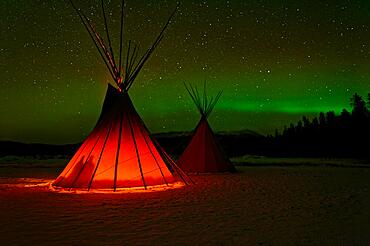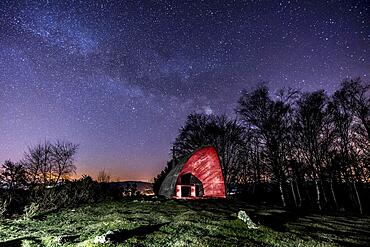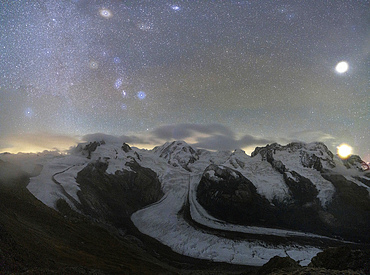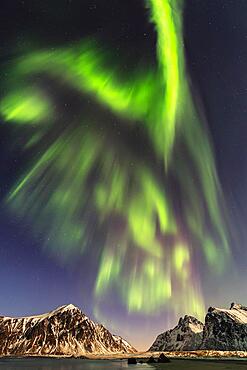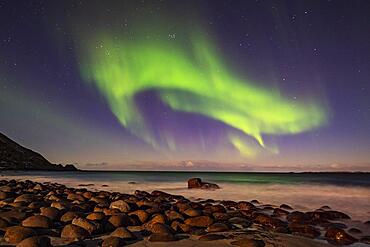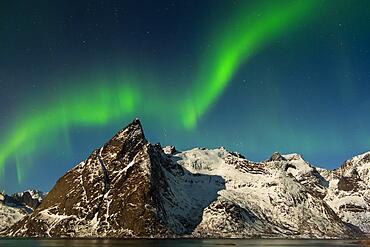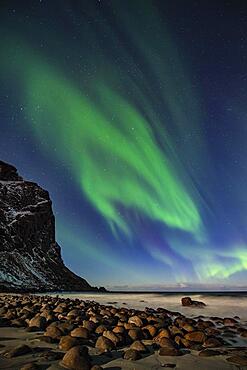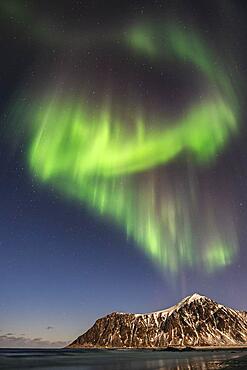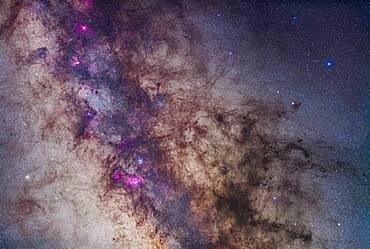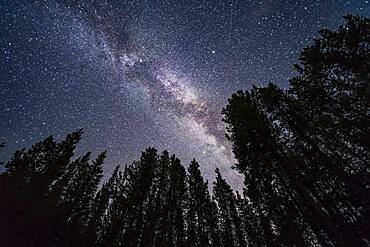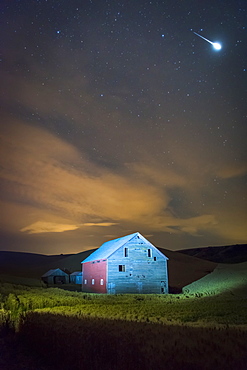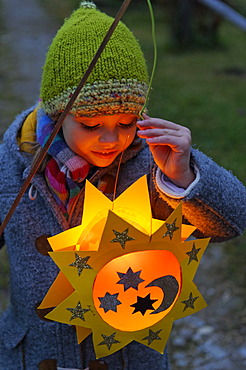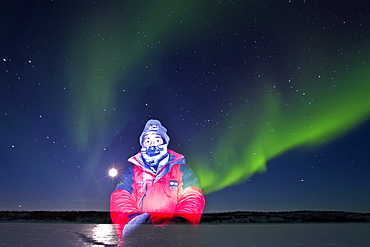Recent searches
Loading...
832-404455 - Two tents, tipis, Indian tents, front one illuminated from the inside, in a winter landscape, aurora borealis with stars in the sky, Yukon Territory, Canada, North America
832-404226 - Milky way in the beautiful illuminated hermitage of Agina, Navarra
832-404223 - Milky way in the beautiful illuminated hermitage of Agina, Navarra
832-399849 - Star made of tea lights for the Festival of Lights, Black Forest, Bad Wildbad, Germany, Europe
1179-6160 - Panoramic of majestic Monte Rosa glacier under the bright stars at night, Gornergrat, Zermatt, canton of Valais, Switzerland, Europe
832-395163 - Northern lights (Aurora borealis), sea, mountains, stars, Flakstad, Nordland, Lofoten, Norway, winter Scandinavian landscape, Europe
832-395162 - Northern lights (Aurora borealis) in winter Scandinavian landscape, sea, mountains, stars, Uttakleiv strand, Leknes, Nordland, Lofoten, Norway, Europe
832-395165 - Northern lights (Aurora borealis), sea, mountains, stars, Hamnoy, Nordland, Lofoten, Norway, winter Scandinavian landscape, Europe
832-395161 - Northern lights (Aurora borealis) in winter Scandinavian landscape, sea, mountains, stars, Uttakleiv strand, Leknes, Nordland, Lofoten, Norway, Europe
832-395164 - Northern lights (Aurora borealis), sea, mountains, stars, Flakstad, Nordland, Lofoten, Norway, winter Scandinavian landscape, Europe
1178-40764 - Shadows from bright glowing light inside yurt
832-394685 - Christmas Cookies Christmas Cookies Pastry Cinnamon Cinnamon Star Banner Decoration Snow, Germany, Europe
1348-5481 - Concept of large blue planet with two satellite moons orbiting and a distant blue star panoramic. Some elements sourced from NASA public Domain.
1348-5466 - Sun, Earth and moon from space panoramic concept. Some elements sourced from NASA public Domain.
1116-51890 - Close-up detail of a crown of thorns starfish (Acanthaster planci); Maui, Hawaii, United States of America
1179-5194 - Bright stars of Milky Way in the night sky over the Laurissilva Forest of Fanal, Madeira island, Portugal, Atlantic, Europe
1179-5192 - Lone tree under the bright Milky Way at night, forest of Fanal, Madeira island, Portugal, Atlantic, Europe
1350-89 - The Horsehead Nebula, B33, below the Belt of Orion and the star Alnitak, along with the bright Flame Nebula, NGC 2024, to the left of Alnitak. Many other bright reflection nebulas populate the field, such as NGC 2023 just left of the Horsehead itself. The quintuple star system Sigma Orionis is right of the Horsehead. The dark Horsehead is set against the bright streak of the emission nebula IC 434.
1350-61 - The Celestron GPS8 scope looking at M22 in the Milky Way in the light of the rising waxing gibbous Moon, from the backyard July 21, 2019. Jupiter is bright at right, Saturn at left.
1350-45 - This is the central area of Cygnus and its bright Milky Way starcloud surrounded by red nebulosity. At left is the star Sadr (gamma Cygni) with the complex of nebulosity catalogued as IC 1318. At centre is the distinct Crescent Nebula, NGC 6888, a expanding nebula created by winds from a hot Wolf-Rayet star. At bottom left is the star cluster Messier 29, though looking a little lost in the rich starfields here. At top is the cluster IC 1311, looking more obvious than M29 but not observed visually and included in the NGC catalog. Odd. At far right are the large and loose star clusters NGC 6883 and NGC 6871, the latter an obvious binocular sight. To the left of Sadr is the small cluster NGC 6910. The dark nebulas B145 and LDN 862 are at right. The small emission nebula at bottom is Sharpless 2-104.
1350-178 - The asterism of the False Cross in Vela and Carina, at left, with Gamma Velorum, a bright blue supergiant star, at right. In between are faint arcs of nebulosity in the Gum Nebula. To the left of Gamma Velorum is the open star clister NGC 2547. Below the bottom star of the False Cross, Epsilon Carinae or Avior, is the large naked-eye star cluster NGC 2516. To the right of the right star of the False Cross, Delta Velorum, is the loose open cluster IC 2391.
1350-140 - The large star-forming region of IC 1396 in Cepheus, taken September 5, 2018 from home in southern Alberta. The wide field includes the bright orange star Mu Cephei, or Herschel's Garnet Star, at top. The Elephant Trunk Nebula is at centre. North is at top.
1350-175 - Cygnus or the Northern Cross is setting amid the pine trees at Athabasca Falls in Jasper National Park, on a late October night. Cepheus is above and the bright star Vega is low and just above the trees. Deneb is at centre, as is the dark nebula Lynds 3, the Funnel Cloud Nebula. Light cloud adds the natural star glows but also discolours the sky near the horizon.
1350-58 - This is the nebula rich region in the constellation of Monoceros the Unicorn with the dark Cone Nebula (left of centre) and the small V-shaped and bright Hubble's Variable Nebula at bottom, a reflection nebula that varies in form and brightness. Above the Cone Nebula is the triangular Christmas Tree Cluster, NGC 2264, here upside down as the bright blue star 15 Mon is the base of the tree. The large region of nebulosity is Sharpless 2-273. The V-shaped dark nebula above centre is LDN 1603.
1350-15 - Comet Hartley 2 near the Pacman Nebula, NGC 281, in Cassiopeia. Stack of 4 x 6 minute exposures at ISO 1600 with Canon 5D MkII on A&M 105mm apo refractor at f/4.8 with Borg reducer/flattener. Bright star is Alpha Cas, Schedar. Autoguided with Celestron NexGuide autoguider. However, image of comet core is from only one exposure to minimize trailing from this fast-moving comet.
1350-35 - A mosaic of the region around the Small Sagittarius Starcloud and Dark Horse dark nebula complex. The field takes in the Milky Way from the Lagoon Nebula at bottom to the Eagle Nebula at top left. In between from top to bottom are the Swan Nebula (M17), and the Small Sagittarius Starcloud (M24). Flanking the bright M24 starcloud are the large open clusters M23 (right) and M25 (left). At bottom left is the M22 globular star cluster. The prominent dark nebula at right is the large Pipe Nebula (B78) with the small Snake Nebula (B72) above it. The whole complex is visible to the naked eye as the Dark Horse.
1350-150 - The North America Nebula (NGC 7000) and associated nebulosity and star clusters, near the bright blue-white star Deneb in Cygnus.
1350-109 - The rising autumn stars and constellations over and reflected in the lake at Police Outpost Provincial Park, in southern Alberta, on September 26, 2016. The stars of Auriga and Taurus are rising, including the Pleiades at upper right. Capella is the bright star above right centre; Aldebaran is below right in the sky. Both are reflected in the still water, along with the Hyades and Pleiades star clusters. A mild aurora is at left.
1350-47 - This is the Belt of Orion with its three blue stars across the top of the frame (L to R: Alnitak, Alnilam, and Mintaka), with the iconic Horsehead Nebula (aka B33) below Alnitak, with the dark Horsehead set against the bright nebula IC 434, aka Orion's Dagger. The pinkish nebula above Alnitak is NGC 2024, the Flame Nebula. The small blue reflection nebula left of the Horsehead is NGC 2023, with smaller IC 435 to the left of it. The field is filled with the large open cluster Collinder 70. The multiple star at bottom left of centre is Sigma Orionis. Many other smaller bits of reflection nebulas populate the field in and around the Belt.
1350-108 - A mosaic of the Sword and Belt region of Orion the Hunter, showing the diverse array of colourful nebulas in the area, including: curving Barnard's Loop, the Horsehead Nebula below the left star of the Belt, Alnitak, and the Orion Nebula itself as the bright region in the Sword.
1350-13 - The centre of the galaxy area of the Milky Way toward Sagittarius and Scorpius, with the Sagittarius Starcloud right of centre, and the Lagoon Nebula (M8) left of centre. The Cat's Paw Nebula (NGC 6334) in Scorpius is at upper right, the Swan Nebula (M17) and Eagle Nebula (M16) are at lower left. To the right of them is the Small Sagittarius Starcloud (M24). At the very top is the Snake Nebula (B72). The main mass of dark nebula is the Pipe Nebula (B78). Above M24 at left is the open cluster M23 while below the M24 star cloud is the cluster M25. The globular M22 is at the bottom edge. At right of frame are the open clusters M6 (in the dark area of the Milky Way) and M7 (in the bright starcloud).
1350-137 - A horizon-to-zenith panorama of the winter consellations on a March evening as they set into the southwest. Orion is at bottom centre, with his Belt pointing down to Canis Major and up to Taurus. Gemini and Auriga are at top, in this case near the zenith overhead. The bright star clusters, M44, the Beehive, (at left) and M45, the Pleiades, (at right) flank the Milky Way. M45 is embedded in the Zodiacal Light. The star clusters M35 in Gemini and M41 in Canis Major are also visible as diffuse spots, as are several other star clusters. A couple of satellite trails are visible.
1350-170 - The summer Milky Way overhead and through the Summer Triangle stars in July, looking up through trees in Banff National Park at Herbert Lake. Deneb is at top left, Vega at top right, and Altair is at bottom. The bright Cygnus star cloud is obvious. As are the dark lanes in the Milky Way, including the Funnel Nebula at top, aka Le Gentil 3.
1116-50279 - Old caboose at nighttime under a bright, starry sky; Coderre, Saskatchewan, Canada
1116-48460 - Bright yellow tent and star trails, Devils Tower National Monument, Wyoming, United States of America
1116-48095 - The flag of China, also known as the Five-star Red Flag, in Tiananmen Square, Beijing, China
746-89443 - Famous Las Vegas sign on bright sunny day, Nevada.
1116-46565 - Stars And Constellations Above A Farmhouse And Barn In A Wheat Field At Night, Palouse, Washington, United States Of America
1116-46119 - Man Standing Under A Bright Display Of The Northern Lights, Iceland
1116-42988 - The Bright Neon Green Aurora Illuminates Above A Yurt In The Boreal Forest, Chena River State Recreation Area, Fairbanks, Alaska, United States Of America
1116-43114 - The Aurora Borealis (Northern Lights) And Stars Circling Above The Sign Marking The Entrance To Denali National Park And Preserve, Alaska, United States Of America
1116-42284 - Northern Lights In The Sky Above The Tony Knowles Coastal Trail, Anchorage Coastal Refuge, Anchorage, Alaska, United States Of America
1116-42285 - Northern Lights And The Moon In The Sky Above The Tony Knowles Coastal Trail, Anchorage Coastal Refuge, Anchorage, Alaska, United States Of America
1116-42286 - Northern Lights In The Sky Above The Tony Knowles Coastal Trail, Anchorage Coastal Refuge, Anchorage, Alaska, United States Of America
857-95253 - Milky Way galaxy and stars in sky above man shining flashlight at sky at dusk
832-368454 - Girl with a lantern at a St. Martin's parade, lantern procession, St. Martin's Day, Pfaffenwinkel, Bavaria, Germany, Europe
832-368453 - Girl with a lantern at a St. Martin's parade, lantern procession, St. Martin's Day, Pfaffenwinkel, Bavaria, Germany, Europe
832-366526 - View on the Nanjing Lu at night, Shanghai, China, Asia
832-366525 - View on the Nanjing Lu at night, Shanghai, China, Asia
832-366527 - View on the Nanjing Lu at night, Shanghai, China, Asia
1161-5909 - Aurora Borealis spectacular Northern Lights green and purple curtain effect and Venus star at Grotfjord, Kvaloya island, Tromso, Arctic Circle, Northern Norway
1161-5911 - Aurora Borealis spectacular Northern Lights green and purple curtain effect and Venus star at Grotfjord, Kvaloya island, Tromso, Arctic Circle, Northern Norway
1161-5908 - The Aurora Borealis spectacular Northern Lights and Venus star at Grotfjord, Kvaloya island, Tromso in the Arctic Circle, Northern Norway
1161-5910 - Aurora Borealis spectacular Northern Lights green and purple curtain effect and Venus star at Grotfjord, Kvaloya island, Tromso, Arctic Circle, Northern Norway
832-184375 - Illuminated stars, Christmas Market, Nuremberg, Franconia, Bavaria, Germany, Europe
832-191236 - Christmas light decorations at night in Prien, Chiemsee, Chiemgau, Upper Bavaria, Germany, Europe
1116-29003 - Indonesia, A necklace seastar (Fromia monilis) on gorgonian coral.
1116-31310 - Fiji, Vanua Levu, This seastar/starfish (Linckia laevigata) is pictured on a hard plate coral.
1116-30938 - Galapagos, closeup of seastar on colorful sand.
1116-27747 - Hawaii, Oahu, Lanikai, Young girl finds starfish at beach.
1116-30445 - Hawaii, Reticulated brittle star (ophiocoma brevipes) on cushion starfish (culcita novaeguineae).
1116-34619 - Extreme close-up of American flag star and stripes, motion
1116-27746 - Hawaii, Oahu, Lanikai, Young girl with starfish at beach.
1116-30455 - Hawaii, Commensal Shrimp (periclemenes soror) and Reticulated Brittle Star (ophiocoma brevipes) on Cushion Starfish (culcita novaeguineae).
1116-36808 - Hawaii, Oahu, Pearl Harbor, Full view of Arizona Memorial at sunset, bright orange yellow sky
797-9727 - England, Lincolnshire, Skegness, Facade of amusement arcade in clear blue sky.
797-9722 - England, Lincolnshire, Skegness, Facade of amusement arcade with rollercoaster behind in clear blue sky.
908-155 - Common Sunstar (Crossaster Papposus).
St Abbs Head, Scotland, UK, North Sea.
979-8267 - Aurora Borealis (Northern (Polar) Lights) and waxing moon over the boreal forest outside Yellowknife, Northwest Territories, Canada
979-8274 - Aurora Borealis (Northern (Polar) Lights) and waxing moon over the boreal forest outside Yellowknife, Northwest Territories, Canada
979-8281 - Aurora Borealis (Northern (Polar) Lights) and waxing moon over the boreal forest outside Yellowknife, Northwest Territories, Canada
979-8270 - Aurora Borealis (Northern (Polar) Lights) over the boreal forest outside Yellowknife, Northwest Territories, Canada
979-8280 - Aurora Borealis (Northern (Polar) Lights) over the boreal forest outside Yellowknife, Northwest Territories, Canada
979-8283 - Self-portrait with aurora borealis (Northern (Polar) Lights) over the boreal forest outside Yellowknife, Northwest Territories, Canada
979-8272 - Aurora Borealis (Northern (Polar) Lights) over the boreal forest outside Yellowknife, Northwest Territories, Canada
979-8271 - Aurora Borealis (Northern (Polar) Lights) over the boreal forest outside Yellowknife, Northwest Territories, Canada
979-8279 - Aurora Borealis (Northern (Polar) Lights) over the boreal forest outside Yellowknife, Northwest Territories, Canada
979-8276 - Aurora Borealis (Northern (Polar) Lights) over the boreal forest outside Yellowknife, Northwest Territories, Canada
979-8264 - Aurora Borealis (Northern (Polar) Lights) over the boreal forest outside Yellowknife, Northwest Territories, Canada
979-8282 - Aurora Borealis (Northern (Polar) Lights) over the boreal forest outside Yellowknife, Northwest Territories, Canada
979-8251 - Star trails over the boreal forest outside Yellowknife, Northwest Territories, Canada
979-8265 - Aurora Borealis (Northern (Polar) Lights) over the boreal forest outside Yellowknife, Northwest Territories, Canada
979-8277 - Aurora Borealis (Northern (Polar) Lights) over the boreal forest outside Yellowknife, Northwest Territories, Canada
979-8266 - Aurora Borealis (Northern (Polar) Lights) over the boreal forest outside Yellowknife, Northwest Territories, Canada
979-8278 - Aurora Borealis (Northern (Polar) Lights) over the boreal forest outside Yellowknife, Northwest Territories, Canada
979-8275 - Aurora Borealis (Northern (Polar) Lights) over the boreal forest outside Yellowknife, Northwest Territories, Canada
979-8273 - Aurora Borealis (Northern (Polar) Lights) over the boreal forest outside Yellowknife, Northwest Territories, Canada
979-8261 - Aurora Borealis (Northern (Polar) Lights) over the boreal forest outside Yellowknife, Northwest Territories, Canada
979-8268 - Aurora Borealis (Northern (Polar) Lights) and waxing moon over the boreal forest outside Yellowknife, Northwest Territories, Canada
979-8269 - Aurora Borealis (Northern (Polar) Lights) over the boreal forest outside Yellowknife, Northwest Territories, Canada
You reached the end of search results
